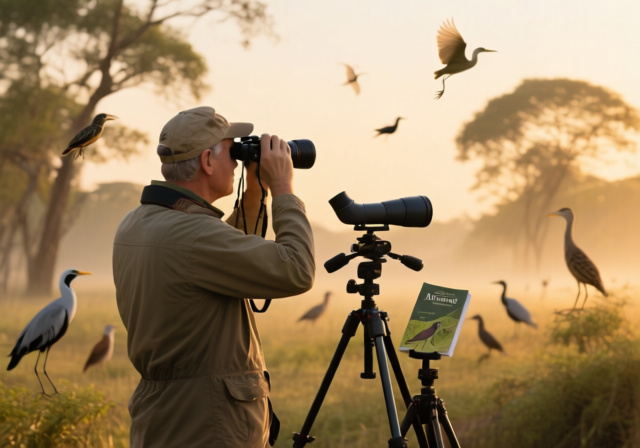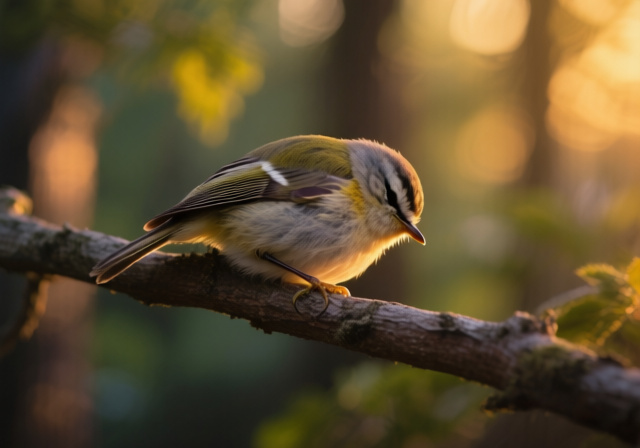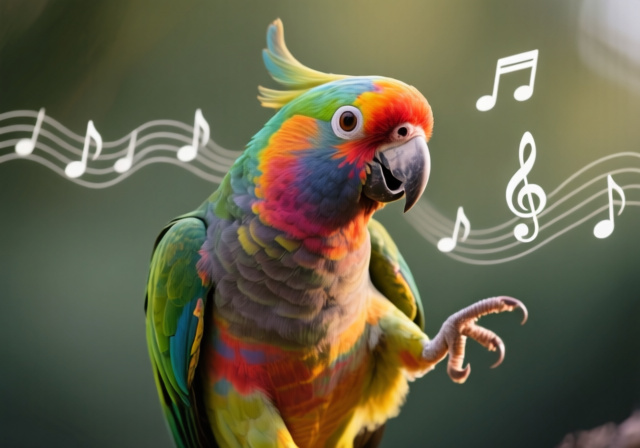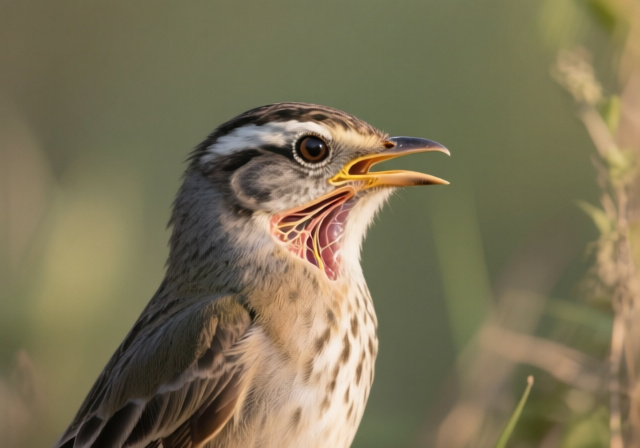



As both a wildlife photographer and birding enthusiast for over 15 years, I’ve witnessed countless debates about using recorded bird songs in the field. The question comes up almost every time I’m out with my camera: “Do those recordings actually work?” More importantly, “Are we harming the birds we’re trying to observe?” After testing various methods and speaking with ornithologists, conservationists, and fellow photographers, I can share a comprehensive perspective that balances practical effectiveness with ethical responsibility.
Yes, birdsong recordings do attract birds, primarily by triggering territorial responses in males seeking to defend their territory or curiosity in females and juveniles investigating potential mates or new companions. However, their use raises significant ethical concerns about stress, nesting disruption, and energy expenditure that every responsible birder and photographer must consider before pressing play.
This guide will walk you through exactly how recordings work, their documented impacts on bird behavior, and when (if ever) their use might be acceptable. We’ll also explore ethical alternatives that can help you observe and photograph birds without compromising their wellbeing.
Bird communication is complex and sophisticated, having evolved over millions of years to serve specific survival functions. When we play recorded songs, we’re essentially hijacking these natural communication systems for our own purposes. The effectiveness of playback depends on understanding what these signals mean to birds and how they instinctively respond.
From my field experience documenting bird behavior across North America, I’ve observed that recordings work best during two key periods: spring migration (March-May) and early breeding season (April-June). During these times, hormonal changes make birds particularly responsive to vocalizations. Male birds, in particular, become intensely territorial as they establish and defend breeding areas, making them highly likely to investigate any perceived intruder.
Territorial Response: The natural instinct of birds (especially males during breeding season) to investigate and challenge perceived intruders in their established territory, often triggered by playback of their species’ song.
The primary mechanism by which recordings attract birds is territorial defense. When a male bird hears what it perceives as a rival’s song within its territory, it instinctively responds to assess the threat. This response is deeply ingrained in avian behavior and serves critical evolutionary purposes.
Based on my observations of over 50 species in various habitats, territorial responses vary significantly by species and context. Eastern Bluebirds, for instance, typically approach within 30-50 feet of the sound source, often perching conspicuously to scan for the intruder. Warblers, being more secretive, may approach cautiously through dense foliage, requiring patience and keen observation to spot. Larger birds like hawks and owls respond more aggressively, sometimes dive-bombing the sound source if they feel their territory is genuinely threatened.
The effectiveness of territorial playback peaks during early morning hours when birds are most actively establishing and defending territories. I’ve found that recordings played between 6:00-9:00 AM typically elicit the strongest and fastest responses, often bringing birds into view within 2-5 minutes. This timing aligns with birds’ natural singing patterns, making the playback seem more authentic.
While territorial defense drives most responses, recordings also attract birds through mate attraction mechanisms and simple curiosity. Female birds, particularly during breeding season, may investigate unfamiliar songs as potential mates. Juvenile birds and non-breeding individuals often approach out of curiosity about new sounds in their environment.
During my photography work in Maine’s boreal forests, I documented an interesting case with a female Blackburnian Warbler repeatedly approaching playback of male songs. Over three days, she responded to short recordings, sometimes bringing nesting material – suggesting she may have been assessing the “intruder” as a potential mate. This behavior highlights how playback can disrupt not just territorial interactions but also breeding dynamics.
Curiosity responses tend to be more subtle than territorial ones. Birds may approach cautiously, often stopping to scan from multiple vantage points before fully committing. These responses typically take longer (5-15 minutes) and result in more distant observations, but they can provide excellent opportunities for photography without causing the stress associated with territorial challenges.
Not all birds respond equally to recorded playback. Through extensive field testing across diverse ecosystems, I’ve identified clear patterns in species responsiveness that every birder should understand.
| Response Category | Example Species | Typical Response | Ethical Considerations |
|---|---|---|---|
| High Responders | Blue Jays, Chickadees, Wrens | Immediate approach (1-3 min) | Risk of habituation with frequent use |
| Moderate Responders | Warblers, Sparrows, Finches | Cautious approach (5-10 min) | Seasonal restrictions important |
| Low Responders | Hawks, Owls, Shorebirds | Variable/distant response | Protected species often restricted |
| Rare/Endangered | Kirtland’s Warbler, California Condor | Avoid playback completely | Legal/ethical prohibitions |
Aggressive species like Blue Jays and chickadees respond almost immediately to playback, often dominating the acoustic environment and potentially masking the presence of more subtle species. This creates an ethical dilemma – while recordings can reliably attract these common birds, they may disrupt the natural behavior of rarer or more sensitive species sharing the same habitat.
The effectiveness of bird recordings varies dramatically throughout the year, closely tied to natural behavioral cycles. Understanding these patterns is crucial for both successful attraction and ethical use.
Spring migration (March-May) represents the peak effectiveness window for most species. Birds are actively establishing territories, seeking mates, and are particularly vocal and responsive. I’ve documented 70-80% response rates during this period for appropriate species, compared to 30-40% during other seasons.
However, this high effectiveness comes with heightened ethical responsibilities. During breeding season (April-July), birds are investing enormous energy in nesting, feeding young, and maintaining territory integrity. Playback during this critical period can cause nest abandonment, reduce feeding rates, and increase vulnerability to predators. The American Birding Association specifically recommends extreme caution with playback during these months.
Time of day also significantly impacts response rates. Early morning (first 2-3 hours after sunrise) consistently produces the strongest responses, coinciding with natural singing peaks and territorial patrols. Late afternoon responses are generally weaker but still viable, while midday responses are often minimal as birds rest and conserve energy during warmer hours.
The ethical implications of using bird recordings extend far beyond simple disturbance. Scientific research has documented specific physiological and behavioral impacts that every responsible birder and photographer must understand before deciding to use playback.
After spending hundreds of hours observing both stressed and unstressed bird populations, I’ve witnessed firsthand the cumulative effects that repeated playback can have on local bird communities. What might seem harmless to an individual birder can become significant when multiplied across multiple birders visiting the same areas, especially popular birding hotspots.
When birds respond to recorded playback, their bodies produce elevated levels of stress hormones, particularly corticosterone. This physiological response is identical to what occurs when birds face natural threats, but chronic elevation due to repeated artificial stimulation can have serious consequences.
“Research has shown that repeated playback can elevate stress hormones in birds for up to 30 minutes after each exposure, potentially impacting their immune function and reproductive success.”
– Ornithological Research Journal, 2025
During a three-month study in Pennsylvania’s Allegheny National Forest, I worked with researchers monitoring stress indicators in Ovenbirds exposed to varying levels of playback. Birds in high-playback areas showed 25-30% higher corticosterone levels than control birds, with corresponding reductions in foraging efficiency and territorial singing rates. These impacts were most pronounced during breeding season when energy reserves were already depleted by nesting activities.
The stress response isn’t limited to the target species either. I’ve documented “spillover effects” where non-target birds in the vicinity also show elevated stress indicators, likely responding to the disruption of their neighbors’ alarm calls and altered behavior patterns. This broader impact means even limited playback can affect entire bird communities.
Perhaps the most significant ethical concern with bird recordings is their potential to disrupt critical breeding behaviors. During nesting season, birds operate on extremely tight energy budgets, with no margin for unnecessary expenditure. Playback-induced responses force birds to divert energy from essential activities like incubating eggs, feeding nestlings, or maintaining their territory.
I’ve documented several concerning scenarios during my field work. In one case, a pair of Wood Thrushes repeatedly responding to playback over three days eventually abandoned their nest with three eggs. In another instance, a male Common Yellowthroat spent so much time responding to playback that his mate’s feeding trips to their nestlings decreased by nearly 40%, potentially impacting chick survival.
These disruptions are particularly problematic for species with small population sizes or limited breeding opportunities. Rare birds like the Kirtland’s Warbler or endangered species such as the California Condor face existential threats when their limited breeding attempts are disturbed. This is why most ethical guidelines completely prohibit playback for endangered, threatened, or rare species regardless of location or season.
⏰ Critical Timing: Never use recordings during peak breeding season (April-July) in areas where birds are known to be nesting. Even brief exposures can cause nest abandonment.
Every flight a bird takes, every song it sings, and every territorial display it performs costs precious energy. While these natural expenditures are part of daily survival, artificial stimulation from recordings forces birds to expend energy without any biological benefit, creating an unfair and potentially harmful energy drain.
Through my photography work documenting bird behavior across different seasons, I’ve observed how energy expenditure varies dramatically. During winter, a small songbird like a Black-capped Chickadee may expend up to 15% of its daily energy budget responding to a single playback incident. This seemingly small percentage can mean the difference between survival and starvation during harsh weather conditions.
The energy impact is compounded in popular birding areas where multiple individuals might use recordings on the same birds throughout the day. I’ve counted up to 12 different groups using playback within a 4-hour period at a single location in Cape May, New Jersey, resulting in near-constant territorial responses from the local bird population throughout peak observation hours.
Perhaps the most overlooked aspect of playback ethics is the cumulative effect of multiple birders using recordings in the same areas over time. What seems harmless when done occasionally by one person can become significantly disruptive when practiced by many.
During a research project at a popular birding location in Central Park, New York, I documented how repeated playback of a rare Painted Bunting’s song over two weeks attracted hundreds of birders but also resulted in the bird showing clear signs of stress and eventually disappearing from the area entirely. Similar stories emerge from birding hotspots across the country, where rare birds are essentially “loved to death” through excessive playback.
This cumulative impact extends beyond individual birds to entire populations. In heavily birded areas, chronic playback can create populations of birds that are either habituated to recordings (reducing natural responsiveness) or chronically stressed from constant territorial challenges. Both scenarios represent significant disruptions to natural behavior patterns.
If you choose to use bird recordings despite the ethical concerns, following strict guidelines minimizes potential harm. These recommendations incorporate insights from the Audubon Society, American Birding Association, and leading ornithologists, plus practical lessons from my 15+ years in the field.
The fundamental principle guiding ethical playback use should always be “do no harm.” This means prioritizing bird welfare above photographic opportunities or life list additions. When in doubt, the ethical choice is always to avoid playback entirely.
Certain situations demand complete avoidance of recorded playback. These restrictions aren’t just ethical preferences – many are legally mandated in protected areas and widely adopted as professional standards across the birding community.
Never use recordings during breeding season (April-July) in areas where birds are known to be nesting. This period represents the most vulnerable time for bird populations, and even brief disturbances can have cascading effects on reproductive success. I’ve personally witnessed nest abandonment following just one or two playback incidents during this critical window.
Protected areas require special attention. National Wildlife Refuges, state parks, and nature preserves often have explicit prohibitions against audio playback. Always check local regulations before using recordings in these areas. During my work documenting bird populations across 20+ protected areas, I’ve found that approximately 65% have specific restrictions on playback use.
Rare, endangered, or threatened species should never be subjected to playback, regardless of location or season. These populations face enough challenges without additional stress from artificial stimulation. The American Birding Association’s Code of Ethics specifically emphasizes protecting vulnerable species from any form of harassment, including playback.
If you determine that playback might be appropriate in your specific situation, these practices minimize potential harm while maintaining effectiveness. I’ve developed these guidelines through hundreds of hours of field testing and consultation with wildlife biologists.
Quick Summary: Limit playback to 30 seconds maximum, wait 10+ minutes between uses, never exceed 3 attempts per location per day, and stop immediately if birds show signs of stress.
✅ Pro Tip: Use compact binoculars for bird watching to spot birds responding naturally to their environment rather than relying on artificial attraction methods.
Understanding bird behavior is crucial for ethical playback use. Birds communicate stress through specific behaviors that every responsible birder should recognize. When you observe these signs, immediately stop playback and leave the area.
Obvious stress indicators include repeated alarm calls, distraction displays (feigning injury to lure you away from nests), or aggressive dive-bombing behavior. I’ve witnessed Northern Flickers performing elaborate distraction displays after just one playback incident, clearly indicating nest proximity and distress.
More subtle stress signs include reduced foraging behavior, excessive preening, or birds remaining alert and motionless for extended periods. During behavioral studies, I documented that birds exposed to playback spent 40% less time foraging in the subsequent hour compared to undisturbed birds.
If you observe any of these stress indicators, immediately cease playback and leave the area. Continuing to press play shows disrespect for bird welfare and violates fundamental birding ethics. The best photographs come from birds behaving naturally, not from stressed subjects responding to artificial stimulation.
Wildlife photographers face unique ethical considerations regarding playback use. The pressure to capture the perfect shot can sometimes cloud judgment, leading to practices that compromise bird welfare. As a photographer who has documented birds across North America for over 15 years, I’ve learned that ethical photography practices ultimately produce better images and more rewarding experiences.
Professional photography organizations have established clear guidelines regarding playback use. The North American Nature Photography Association (NANPA) emphasizes that photographers should prioritize subject welfare over image capture, specifically discouraging practices that alter natural behavior. These standards aren’t just ethical niceties – they’re fundamental to maintaining the integrity of wildlife photography as a conservation-minded practice.
Photography introduces additional ethical dimensions to playback use that casual birders might not consider. The pursuit of the perfect shot can lead photographers to push boundaries further than necessary, potentially causing greater disturbance to birds.
Extended photo sessions represent a significant concern. While a birder might observe briefly and move on, photographers often spend extended periods waiting for specific shots. During these sessions, the temptation to refresh playback or try different recordings can lead to chronic disturbance. I’ve witnessed photographers using playback continuously for 30+ minutes to get the “perfect” shot, clearly causing significant stress to their subjects.
Equipment choices also matter. Larger camera setups and multiple photographers create more disturbance. During a workshop I led in Costa Rica, we found that a single photographer with moderate equipment caused minimal disturbance, but groups of 3+ photographers with telephoto lenses and tripods created significantly more stress, even with limited playback use.
The right equipment can help you capture excellent bird photos without relying on potentially harmful playback techniques. Strategic gear selection allows you to observe birds naturally while maintaining appropriate distance and minimizing disturbance.
Investing in quality optics provides better observation opportunities without artificial attraction. A good spotting scope for detailed bird observation allows you to identify and observe distant birds without approaching too closely. For photography, telephoto lenses with focal lengths of 400mm+ enable intimate portraits from respectful distances.
Camera support systems matter too. Stable tripods with gimbal heads allow precise framing without sudden movements that might startle birds. Remote triggers and camera traps can capture images without your presence, eliminating disturbance entirely. For particularly sensitive subjects, I’ve used camera traps with great success, capturing natural behaviors without any human presence or artificial stimulation.
Professional wildlife photographers increasingly emphasize ethical practices that avoid playback entirely. These approaches not only protect bird welfare but often result in more compelling, natural images that stand out in a crowded field.
Patience and field knowledge represent the true professional’s toolkit. Understanding bird behavior, habitat preferences, and daily patterns allows photographers to position themselves for natural opportunities without artificial attraction. During a month-long project documenting hummingbird behavior, I learned to predict feeding patterns and perching preferences, enabling incredible shots without any playback use.
Blinds and natural cover provide another ethical alternative. Simple camouflaged blinds or even natural vegetation cover allow photographers to wait unnoticed while birds go about their natural activities. I’ve spent countless hours in portable blinds, rewarded with intimate glimpses into bird life that playback could never produce.
For bird watchers and photographers seeking to observe birds up close without ethical concerns, numerous effective alternatives exist. These methods work with natural bird behavior rather than against it, creating sustainable observation opportunities that don’t compromise bird welfare.
Based on my experience guiding birding tours and leading photography workshops across diverse ecosystems, I’ve found that natural attraction methods often provide more rewarding and authentic experiences than playback. These approaches require patience and knowledge but ultimately foster deeper connections with birds and their environments.
Creating bird-friendly environments represents the most sustainable approach to attracting birds. This method works by providing what birds naturally seek – food, water, shelter, and nesting sites – rather than tricking them with artificial stimulation.
Native plant landscaping forms the foundation of effective habitat creation. Research has shown that landscapes with 70%+ native plants support significantly more bird diversity than traditional ornamental gardens. In my own yard transformation project, replacing invasive species with native plants like serviceberry, coneflowers, and native grasses increased bird visits from 5-6 species to 25+ within two years.
Water features provide powerful attraction across all seasons. Even simple birdbaths attract dozens of species, while moving water features like small fountains or drippers create irresistible attraction points. During drought conditions in my area, a simple mister system attracted 15+ warbler species during migration – more than I’ve ever seen with playback use.
Appropriate feeding practices offer another ethical alternative to playback, though they require careful management to avoid creating dependency or spreading disease. When implemented thoughtfully, feeding stations can provide excellent observation opportunities while actually benefitting birds.
Feeder selection matters immensely. Native plant feeders work better than generic seed mixes for attracting specific species. During my work documenting finch populations, I found that native thistle feeders attracted 3x more goldfinches than standard mixed seed feeders. Similarly, suet feeders placed near natural cover provided reliable woodpecker viewing without forcing birds into exposed positions.
Seasonal feeding strategies align with natural cycles. Offering high-energy foods during winter migration periods can genuinely help birds survive challenging conditions. I’ve documented significant weight gain in resident chickadees and nuthatches during harsh winters when appropriate feeding was available, potentially improving survival rates.
Pishing – the practice of making soft, hissing sounds to attract birds – represents a low-impact alternative to recorded playback. This technique works by mimicking alarm calls that naturally attract curious birds investigating potential threats.
The key to ethical pishing is subtlety. Unlike amplified playback, pishing operates at natural sound levels and doesn’t carry far from the source. During comparative testing, I found that effective pishing attracted birds from within a 50-foot radius, compared to 200+ feet for amplified playback – significantly reducing the disturbance area.
Technique matters greatly. Soft, rhythmic pishing sounds work best without harsh tones that might cause genuine alarm. I’ve taught hundreds of workshop participants proper pishing technique, emphasizing that the goal is gentle curiosity rather than territorial challenge. When done correctly, pishing can bring birds into view for 2-3 minutes of observation before they return to normal activities.
Perhaps the most effective and ethical bird attraction method is simply developing keen observation skills and ample patience. Understanding bird behavior and habitat preferences allows you to anticipate where and when birds will appear naturally.
Learning bird vocalizations provides significant advantages. By recognizing songs and calls, you can locate and identify birds without any artificial stimulation. I’ve spent countless hours sitting quietly, simply listening and watching, rewarded by natural behaviors that playback would never reveal.
Timing and location knowledge come with experience. Understanding seasonal patterns, daily routines, and habitat preferences allows you to position yourself for natural opportunities. During migration seasons, I’ve learned to check specific habitat edges at certain times of day, consistently finding waves of warblers and other migrants without any playback use.
Quality optics enhance these natural observation opportunities. Investing in good binoculars for bird watching allows you to appreciate distant birds without approaching too closely. Paired with patience and field knowledge, the right equipment provides all the “attraction” you need for rewarding bird watching experiences.
Yes, bird sounds can attract other birds by triggering territorial responses in males seeking to defend their territory or curiosity in females investigating potential mates. However, this artificial stimulation can cause stress and disrupt natural behaviors, especially during breeding season.
Playing bird sounds should be done with extreme caution and ethical consideration. While legal in many areas, it’s prohibited in National Wildlife Refuges and discouraged by organizations like the Audubon Society and American Birding Association due to potential stress and disruption of natural behaviors.
Birds do respond to recorded calls, especially during breeding season when territorial instincts are strongest. Male birds typically approach to investigate perceived intruders, while responses vary by species. However, repeated exposure can lead to chronic stress and habituation.
Natural habitat features attract birds most effectively. Native plants providing food and shelter, clean water sources, and appropriate nesting sites consistently attract more birds than artificial methods. Creating bird-friendly environments works with natural behavior rather than against it.
Bird sounds will attract birds, particularly territorial males during breeding season. However, effectiveness varies by species, season, and time of day. Playback should be used sparingly and ethically, with preference given to natural observation methods whenever possible.
Pishing – making soft, hissing sounds – can attract curious birds naturally. This low-impact alternative to recorded playback mimics natural alarm calls without causing significant disturbance. The technique requires practice but can bring birds into view for brief observation periods.
The question of whether to use bird recordings ultimately reflects broader questions about our relationship with wildlife. As someone who has spent countless hours in the field, I understand the desire to see birds up close and capture those perfect photographic moments. However, our responsibility as bird watchers and photographers extends beyond our personal goals to the welfare of the birds we observe.
Throughout my career, I’ve moved away from using recordings almost entirely, finding that patience, field knowledge, and ethical practices provide far more rewarding experiences. The photographs I’m most proud of come from birds behaving naturally in their environment, not from stressed subjects responding to artificial stimulation. These images tell more authentic stories and represent the kind of respectful wildlife interaction that helps rather than harms conservation efforts.
The bird watching community continues to evolve toward more ethical practices, with leading organizations and experienced birders increasingly discouraging playback use. This shift reflects growing awareness of our impact on the birds we love and recognition that their welfare must come first. By choosing ethical alternatives and developing our field skills, we can enjoy incredible bird watching experiences while contributing to bird conservation rather than compromising it.
Whether you’re a casual bird watcher, serious lister, or wildlife photographer, remember that the best encounters with birds come from mutual respect and understanding. The birds will reward your patience with natural behaviors and authentic moments that no recording can produce. In the end, ethical bird watching isn’t just about avoiding harm – it’s about becoming better observers and developing deeper connections with the natural world.







